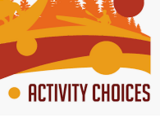
Daily activity options for distance learning.
- Subject:
- Applied Science
- English Language Arts
- History
- Mathematics
- Social Science
- Material Type:
- Game
- Homework/Assignment
- Interactive
- Author:
- Julie Cronin
- Date Added:
- 04/15/2020

Daily activity options for distance learning.

Daily activity options.

What do you like to do for fun? Think about what you do outside of school! Do you like to sing, dance, paint, play video games, or play sports? These types of activities provide entertainment. Be ready to share what you enjoy or don't enjoy in Spanish.ACTFL StandardsCommunication: Interpersonal Communication, Interpretive CommunicationCultures: Relating Cultural Practices to PerspectivesLearning TargetI can respond to yes or no questions about activities I like to do or don’t like to do.Habits of MindThinking and communicating with clarity and precisionCritical Thinking SkillConstruct Meaning

Planning a party or being at a party can be a lot of fun. What types of activities happen at a party or do people do You may already know a few, but in this seminar we will take a look at more specific verbs dealing with a party.ACTFL StandardsCommunication: Interpersonal CommunicationCultures: Relating Cultural Practices to Perspectives Learning TargetI can ask for and provide information on various topics.Habits of MindApplying past knowledge to new situationsCritical Thinking SkillClarity

These activities cover topics in Galaxies and Cosmology, aligned with the OpenStax Astronomy textbook. Topics cover chapters 1, 5, 6, 24-30, and sections of chapter 17 and 19 concerning distance. All activities are designed to be done in small groups in the classroom, but most can be adapted for use as homework or projects. Quantitative and Hands-on activities may be used as labs.
This is one part of an astronomy resource collection by Lane Community College. This collection was built by Andrea Goering (goeringa@lanecc.edu) and Richard Wagner (wagnerr@lanecc.edu), instructors of physics and astronomy at Lane Community College in Eugene, Oregon, USA. Development of these resources was funded through LCC's OER Initiative (https://inside.lanecc.edu/oer). We'd love to hear about your use of these resources! Let us know what you're using, sign up for updates, and submit corrections, suggestions, or comments here: https://forms.gle/un49RUNs55GU3ZNF6
Find the full collection here: https://docs.google.com/spreadsheets/d/142FgVMDHZ7bu53gihe3kJ_-5PzsnuzfMklJ1ZLMFk2E/edit#gid=315930953
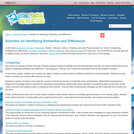
This article discusses the four forms of identifying similarities and differences: comparing, classifying, creating metaphors, and creating analogies and how these strategies can be used in an elementary classroom.
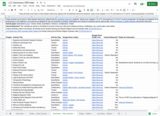
These activities cover topics in Solar System Astronomy, aligned with the OpenStax Astronomy textbook. Topics cover chapters 1-5, 6-13, and sections of 14 and 21 covering exoplanets. All activities are designed to be done in small groups in the classroom, but most can be adapted for use as homework or projects. Quantitative and Hands-on activities may be used as labs.
This is one part of an astronomy resource collection by Lane Community College. This collection was built by Andrea Goering (goeringa@lanecc.edu) and Richard Wagner (wagnerr@lanecc.edu), instructors of physics and astronomy at Lane Community College in Eugene, Oregon, USA. Development of these resources was funded through LCC's OER Initiative (https://inside.lanecc.edu/oer). We'd love to hear about your use of these resources! Let us know what you're using, sign up for updates, and submit corrections, suggestions, or comments here: https://forms.gle/un49RUNs55GU3ZNF6
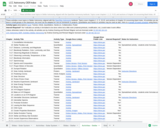
These activities cover topics in Stellar Astronomy, aligned with the OpenStax Astronomy textbook. Topics cover chapters 1, 2, 5, 15-23, and sections of chapter 24 concerning black holes. All activities are designed to be done in small groups in the classroom, but most can be adapted for use as homework or projects. Quantitative and Hands-on activities may be used as labs.
This is one part of an astronomy resource collection by Lane Community College. This collection was built by Andrea Goering (goeringa@lanecc.edu) and Richard Wagner (wagnerr@lanecc.edu), instructors of physics and astronomy at Lane Community College in Eugene, Oregon, USA. Development of these resources was funded through LCC's OER Initiative (https://inside.lanecc.edu/oer). We'd love to hear about your use of these resources! Let us know what you're using, sign up for updates, and submit corrections, suggestions, or comments here: https://forms.gle/un49RUNs55GU3ZNF6
Find the full collection here: https://docs.google.com/spreadsheets/d/142FgVMDHZ7bu53gihe3kJ_-5PzsnuzfMklJ1ZLMFk2E/edit#gid=315930953
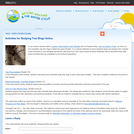
Selected resources provide three web-based activities to complement science lessons in an issue of Beyond Weather and the Water Cycle. The free, online magazine for Grades K-5 teachers explores the essential principles of climate literacy.

Ever tried to play games with kids in English?It can be a fun treat!But what about when the child doesn’t even know how to say hello?In this case, trying to play games or sing songs can be just plain frustrating.It can’t be denied—teaching English to children is nothing like teaching adults! 5 Creative Ways to Teach Children Through Fun Activities1. Art ProjectsArt is a fantastic way to get your young students excited and interested in a variety of lessons to reinforce different vocabulary.The art project that goes with this lesson should either come at the end of the class or at the beginning of the following class after a brief review of the vocabulary. Students can draw pictures independently, but you should walk around the room and encourage them to talk to you about their work.2. Active GamesYou’ve probably already witnessed the awesome power of kinesthetic learning in the classroom, and active games can be a great way to get beginners up and moving. One of the best for beginners is Simon Says, or a variant thereof.Simon Says can be a very useful way to reinforce new vocabulary while also upping the energy. That’s why it’s a great choice either at the beginning or in the middle of a class.3. Singing SongsSongs are a fantastic mnemonic device for new vocabulary, and the Internet is a wealth of different song ideas. The best time to use a song is once the vocabulary has already been introduced. Some songs are simpler, ideal for using the same day or the same week that the vocabulary is introduced.4. LabelingLabeling can be a great way to remember new vocabulary. We already discussed a bit how labeling can be used during an art project, but you can also use labeling in a classroom or with photographs.If you’re trying to teach the names of different things in the classroom, tasking your students with creating labels for them can be a great way to get them up and moving—and speaking! Once the labels are created, be sure to laminate them. You can use them with all sorts of games, from treasure hunts to interactive matching or memory games.5. Educative PlayParticularly when your students are very young, educative play is a useful technique for teaching them without ever letting on! Students can be encouraged to play with one another in a variety of ways, either with board games or in a playroom or space, depending on the way your school is laid out. The idea with educative play is for teachers and assistants to participate in the play in English, asking questions that students can answer.
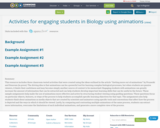
This resource includes three classroom-tested activities that were created using the ideas outlined in the article “Getting more out of animations” by Pruneski and Donovan (in press). The driving idea is that animations can be a powerful tool for learning complex biological processes, but when students are passive viewers, it limits their usefulness and may become simply another source of content to be memorized. Engaging students with animations can greatly increase the amount of information that can be extracted and can help students develop important learning skills that can be useful in the future.
These sample assignments help make the use of animations more effective and active by structuring student viewing using guiding questions. These questions focus on particular objects, features, or steps of the process to help students accomplish specific learning objectives for that topic. The assignments also help students think about animations as media objects that are created by scientists and animators using specific tools and conventions that affect how the process is depicted and the ways in which it should be viewed. Lastly, by comparing and contrasting multiple animations of the same process, students can extract more information, overcome the limitations of each individual animations, and generate a more complete view of the process.
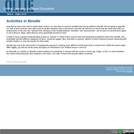
Activities in Moodle
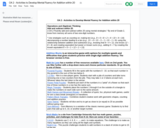
This resource is part of the San Francisco Unified School District Math Core Curriculum for Grade 2. It includes numerous activities to help students build fluency for addition within 20.
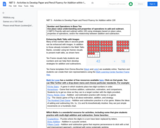
This resource is part of the San Francisco Unified School District Math Core Curriculum for Grade 2. It includes numerous activities to help students build fluency for addition within 100.

Activity about English pronouns

In the minerals and products activity, students match physical products with actual mineral samples, using observable properties as well as the minerals' chemical formulas and some products' ingredient lists.
(Note: this resource was added to OER Commons as part of a batch upload of over 2,200 records. If you notice an issue with the quality of the metadata, please let us know by using the 'report' button and we will flag it for consideration.)
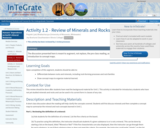
The discussion presented here is meant to augment, not replace, the pre-class reading, as well as to provide an introduction to concept maps.
(Note: this resource was added to OER Commons as part of a batch upload of over 2,200 records. If you notice an issue with the quality of the metadata, please let us know by using the 'report' button and we will flag it for consideration.)
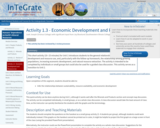
This short activity (10--15 minutes) for Unit 1 introduces students to the general relationship between economic development and resource use, and, particularly with the follow-up homework, the relationship among growing populations, increasing economic development, and natural resource extraction. The activity is intended to be completed by individuals or small groups but could also be used for a guided class discussion. This activity serves as a transition to Unit 2.
(Note: this resource was added to OER Commons as part of a batch upload of over 2,200 records. If you notice an issue with the quality of the metadata, please let us know by using the 'report' button and we will flag it for consideration.)
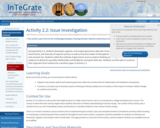
During Activity 2.2, students download, organize, and analyze geoscience data sets of sea level trends, terrestrial ice sheet trends, and intensity of tropical cyclones as well as forecast models of atmospheric CO2 and temperature trends and sea level rise. Students utilize the methods of geoscience such as systems thinking and using multiple lines of evidence to determine possible relationships and feedbacks among the data sets. Students use this data to construct their argument from evidence for a position paper in Activity 2.3.
(Note: this resource was added to OER Commons as part of a batch upload of over 2,200 records. If you notice an issue with the quality of the metadata, please let us know by using the 'report' button and we will flag it for consideration.)
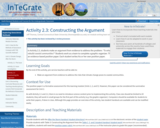
In Activity 2.3, students make an argument from evidence to address the problem: "To what extent should we build or rebuild coastal communities?" Students work as a team to complete a graphic organizer. This task helps them organize an evidence-based position paper. Each student writes his or her own position paper.
(Note: this resource was added to OER Commons as part of a batch upload of over 2,200 records. If you notice an issue with the quality of the metadata, please let us know by using the 'report' button and we will flag it for consideration.)